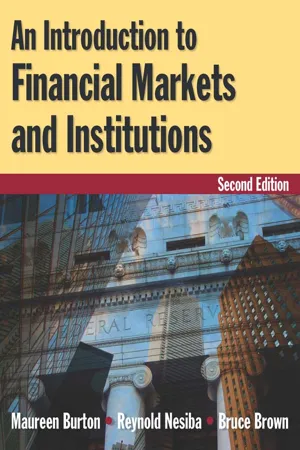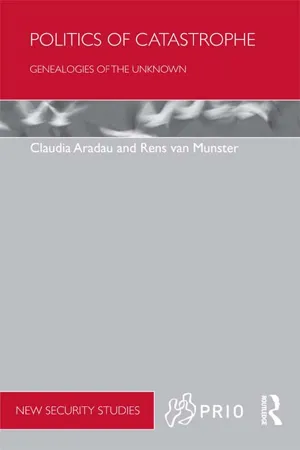Economics
Casualty Insurance Companies
Casualty insurance companies provide coverage for losses resulting from unexpected events such as accidents, injuries, and liability claims. They offer protection for property damage, legal expenses, and medical costs. These companies play a crucial role in managing risk for individuals and businesses by providing financial compensation for unforeseen events.
Written by Perlego with AI-assistance
Related key terms
4 Key excerpts on "Casualty Insurance Companies"
- Maureen Burton, Reynold F. Nesiba, Bruce Brown(Authors)
- 2015(Publication Date)
- Routledge(Publisher)
2 or human perils such as automobile accidents, theft, vandalism, arson, or burglary. Property insurance is most frequently used to protect automobile owners and homeowners. Businesses use property insurance to protect commercial property and the accompanying loss of income caused by its damage or loss.Property InsuranceContingent claims, exchange for premiums that protect insured policyholders from the financial costs of property loss, damage, or destruction.Casualty (liability) insurance protects a policyholder from financial responsibility to those harmed by an accident, product failure, or professional malpractice. It also provides coverage to commercial and individual property owners when a person is injured on the property. Manufacturing companies purchase casualty insurance to protect themselves against product defects that cause injury or death to consumers. Doctors, lawyers, and other professionals purchase liability insurance to protect themselves from claims of negligence or malpractice. While property insurance lends itself to the actuarial calculations of risk, liability risk exposure is more uncertain and is virtually impossible to predict accurately. The liability suits and high putative damage awards successfully brought against tobacco companies in the late 1990s and in the early 2000s were unimaginable to most only 10 years earlier.Casualty (Liability) InsuranceInsurance exchanged for premiums that protects insured policyholders from the financial responsibilities to those harmed by an accident, product failure, or professional malpractice.Most automobile insurance policies are a combination of both property insurance and casualty insurance. The property insurance portion protects against loss or damage to the vehicle in case of an accident, vandalism, damaging weather, or theft. The casualty insurance portion of the policy provides the owner with liability coverage if he or she harms another or another’s property with the vehicle. Assume a two-car accident. Your car hits another car and causes injuries both to yourself and to the other driver. You, the insured driver, are at fault, so the property insurance part of your policy will pay for the repair of your car. The casualty part of your insurance policy will pay for any medical injuries to yourself and for the repair of the automobile you hit. It will also cover the medical bills (up to some prescribed limit) of the other driver. If the case had to first go through court, the liability insurance would also, in some cases, cover the defendant’s court costs. In some states, no-fault insurance- eBook - ePub
Foundations of Financial Risk
An Overview of Financial Risk and Risk-based Financial Regulation
- Richard Apostolik, Christopher Donohue(Authors)
- 2015(Publication Date)
- Wiley(Publisher)
sum assured. If the actual loss suffered by the policyholder is less than the sum assured, then the policyholder will receive the actual loss, rather than the sum assured. Insurance works on the principle of sharing the losses of a few people among a large number of people who support the loss payout through their small contributions or premiums.There are two main types of insurance: property and casualty (P&C) and life insurance. Property and casualty insurance covers losses arising from, for example, fires, car crashes, the sinking of a ship, and theft. Life insurance pays a sum of money on the death of the policyholder. Life insurance is often linked with pensions, with this aspect of insurance sometimes referred to as “life and pensions.” Insurance use by a pension plan would work with the insurance company paying out a sum of money when the policyholder reaches a certain age or when other pre-agreed conditions are met.9.1.1 The Business Model of Insurance Companies
The business model of insurance companies is very different from that of banks. Whereas banks tend to have short-term liabilities and long-term assets, insurance companies often have long-term liabilities but ample short-term assets (although these assets may be invested long-term).Insurance companies make profits in two ways: from the difference between what they receive in premiums and pay out in claims, and from any profits that they receive by investing the premiums that they receive.EXAMPLE
Insurance Company A receives and invests an annual premium of USD 500 for three years to insure a policyholder's car. At no point in those three years does the policyholder make a claim for an accident. The insurance company has made a profit of USD 1,500, before taking into account investment income and administrative expenses. In the fourth year, the policyholder crashes the car and makes a claim for USD 2,200. The insurance company is now facing a loss of USD 200 (four years of premiums at USD 500 per year minus a claim of USD 2,200).However, the insurance company has made a profit of USD 300 from investing the premiums received from the policyholder. As a result, the insurance company has made an overall profit on the transaction of USD 100, before taking into account administrative expenses (total premiums of USD 2,000 plus investment income of USD 300 minus the claim of USD 2,200). - Tony Moore, Raj Lakha(Authors)
- 2007(Publication Date)
- Routledge(Publisher)
THE LAW RELATING TO EMERGENCIES AND DISASTERS .13.3 Key groups
The disaster-insurance process includes assessing risk exposure, buying insurance, incurring a loss incident (disaster), managing the crisis, mitigating the impact and recovering. This process engages a number of key groups:• brokers (insurance intermediaries); • underwriters (insurers); • emergency response services (fire, ambulance, police); • loss adjusters; • claims handlers and damage restoration companies.13.4 Financial loss
Insurance is a composite risk treatment – a risk transfer mechanism that reduces the adversity of the financial impact of hazards by:• directly indemnifying insured against financial loss; • indirectly reducing financial vulnerability to disasters; and, • ensuring adherence to risk management procedures including loss prevention measures.It is a method of spreading, over time and over a wider body of individuals/organisations, the financial losses arising from the occurrence of some types of uncertain events in a given period of time (van Oppen ‘The Role of Insurance in Disaster Reduction’ (2001) Research Paper Collection). According to Merkin (Merkin R Insurance Handbook (1st edn, 1994) Tolley), the most widely quoted definition of insurance is that of Channell J in Prudential Insurance Company v IRC [1904] 2 KB 658- eBook - ePub
Politics of Catastrophe
Genealogies of the Unknown
- Claudia Aradau, Rens Van Munster(Authors)
- 2011(Publication Date)
- Routledge(Publisher)
what these events and losses may be. Whereas insurance is generally associated with social solidarity, this chapter suggests that the assurantial capitalization of catastrophe has created divisions between propertied life and those without property. Insurance fosters capitalist subjects and enacts continuity as the key principle of social and political life.Capitalizing on catastrophe
Inspired by the work of Michel Foucault, François éwald (1986) has offered the most elaborate genealogy of insurance as a dispositif for governing the social. His work illuminates the central role of insurance for modern societies as a strategy through which subjects are made up and governed. In its early forms, he argues, insurance against accidents provided a solution to the otherwise insoluble question of responsibility. Who was responsible for industrial accidents? Was it capitalism, the corporations, or was it the worker? As the juridical answer was found to raise difficult questions in its negotiation of this question, insurance offered a solution that did away with legal responsibility through the creation of a form of solidarity. The particularity of insurance, éwald argues, is that it no longer gives reparation on the model of charity, but on a model ofjustice given by a rule. The idea of risk, therefore, does away with causality; what matters is not the cause, but the rule according to which reparation is decided. For éwald, insurance carries the promise of emancipation: it allows more freedom and autonomy to the working class and constitutes citizenship on a model of social solidarity.5 Since the 1990s, governmentality scholars have expanded this genealogy by examining how neo-liberal schemes of private and individualized forms of insurance have transformed and reworked collective schemes based on the model of universal solidarity (see e.g. Baker and Simon 2002, Ericson et al. 2003, Ericson 2007).6
Learn about this page
Index pages curate the most relevant extracts from our library of academic textbooks. They’ve been created using an in-house natural language model (NLM), each adding context and meaning to key research topics.



